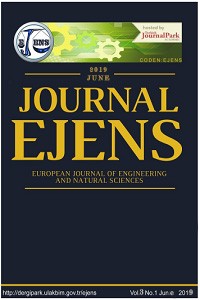Abstract
Boronizing
and titanium diffusion were applied to an interstitial-free steel substrate
separately and one after another. Boronizing was carried out in a liquid
environment by applying an electric current, but titanium diffusion was
performed in a closed chamber containing solid chemicals. The generated
single-layered and multi-layered diffusion coatings were characterised by
utilising an optical microscope, a scanning electron microscope equipped with
an energy dispersive spectrometer, and a Vickers microhardness tester. Phase
analysis was carried out by an x rays diffractometer. Some chemical reactions
were supposed to occur regarding titanium diffusion process and the standard
formation enthalpies of these reactions were calculated by using a database.
Microstructural investigations revealed that titanium diffusion was able to be
applied after boronizing, causing the formation of a titanium based diffusion
layer over the previously generated boride layer. On the other hand, when a
titanium diffused substrate was boronized, the titanium based diffusion layer
acted as a diffusion barrier to the introduced boron atoms, preventing the formation
of a boride layer. However, if boronizing duration and the current density
applied during boronizing were increased to a certain degree, boron atoms could
surpass this barrier in small quantities and form small discontinuous regions.
It was observed that the hardness of a phase which was formed within the
titanium based diffusion layer was more than 4000 HV in some regions when
titanium diffusion was applied after boronizing. The standard formation
enthalpies of the six assumed chemical reactions were negative, indicating that
these can occur at 1000 °C at which titanium diffusion
was applied. Moreover, most of the products of these reactions were detected in
x rays diffraction analyses.
Keywords
References
- [1] A. K. Sinha, Heat Treating: Boriding (Boronizing) of Steels, ser. ASM Materials Handbook. Materials Park, OH, USA: ASM Int., vol. 4, pp. 978-997, 1995.
- [2] J. R. Davis, Surface Hardening of Steel: Understanding the Basics: Boriding. Materials Park, OH, USA: ASM Int., pp. 213-226, 2002.
- [3] N. Gidikova, “Thermodiffusion Treatment of Steel with Ti Thermodynamics and Phase Composition,” Mater. Sci. & Eng. A, vol. 222, pp. 84-90, 1997.
- [4] K. Dutta and K. K. Ray, “Ratcheting Strain in Interstitial Free Steel,” Mater. Sci. & Eng. A, vol. 575, pp. 127-135, 2013.
- [5] “ID: C1-103 Material Safety Data Sheet: Ammonium Chloride,” Chem. One, Houston, TX, USA, 2010.
Abstract
References
- [1] A. K. Sinha, Heat Treating: Boriding (Boronizing) of Steels, ser. ASM Materials Handbook. Materials Park, OH, USA: ASM Int., vol. 4, pp. 978-997, 1995.
- [2] J. R. Davis, Surface Hardening of Steel: Understanding the Basics: Boriding. Materials Park, OH, USA: ASM Int., pp. 213-226, 2002.
- [3] N. Gidikova, “Thermodiffusion Treatment of Steel with Ti Thermodynamics and Phase Composition,” Mater. Sci. & Eng. A, vol. 222, pp. 84-90, 1997.
- [4] K. Dutta and K. K. Ray, “Ratcheting Strain in Interstitial Free Steel,” Mater. Sci. & Eng. A, vol. 575, pp. 127-135, 2013.
- [5] “ID: C1-103 Material Safety Data Sheet: Ammonium Chloride,” Chem. One, Houston, TX, USA, 2010.
Details
| Subjects | Engineering |
|---|---|
| Journal Section | Makaleler |
| Authors | |
| Publication Date | June 27, 2019 |
| Published in Issue | Year 2019 Volume: 3 Issue: 1 |

